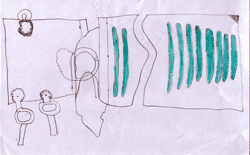 |
Buckles were known as dalc or fifele to the Anglo-Saxons. |
| Both men, women and children wore them on belts. However some of the most elaborate buckles have been found in male graves so were probably mostly worn by men. Anglo-Saxon belts were made of leather or textiles, such as tablet woven wool, linen or hemp. | 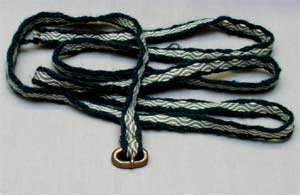 |
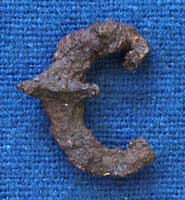 |
Most Anglo-Saxon buckles were small, plain and made of bronze (copper alloy) or iron. This fragment of an iron buckle (AN1935.47i) was found at Abingdon in Oxfordshire. |
There were also buckles which were decorated and highly ornate. |
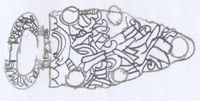 |
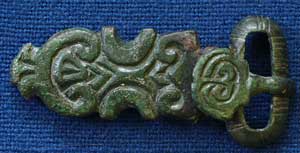 |
This buckle (AN1909.479b) was found at Icklingham in Suffolk. It is made of bronze and, although it is quite small (about 6cm), it has a complicated pattern on both the buckle and buckle plate. |
| The buckle plate was used to attach the leather or textile to the buckle, making the join stronger. These plates were made either of a single sheet of cast metal or a folded rectangular sheet of metal. | 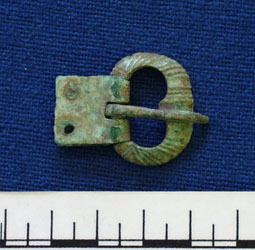 |
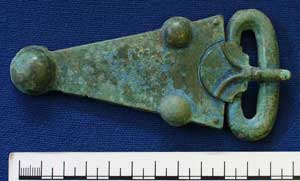 |
This triangular style of belt plate was popular in the early Anglo-Saxon period (AD 450-650). This example (AN1909.138) was found at Faversham in Kent. The more decorative plates and buckles may have been worn by wealthy Anglo-Saxons or by those of high status. |
| Some belts also had pieces of metal (mount) which would decorate the belts, such as this example from Dorchester in Oxfordshire (this belt is in the virtual gallery case 3 ). |
Drawn by Naomi |
See more examples of buckles in the virtual gallery (case 7 ) |
|

